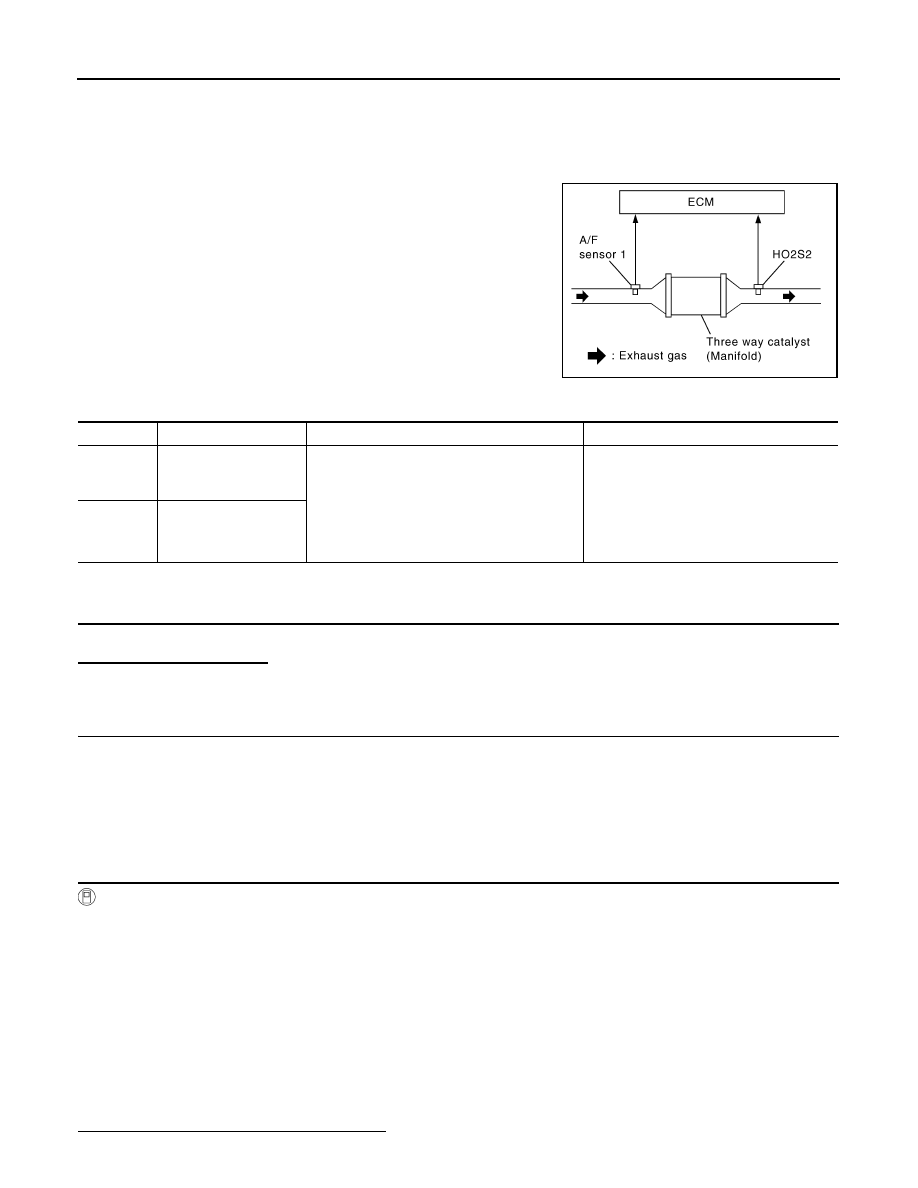Nissan Teana J32. Manual - part 422

EC-226
< COMPONENT DIAGNOSIS >
[VQ25DE, VQ35DE]
P0420, P0430 THREE WAY CATALYST FUNCTION
P0420, P0430 THREE WAY CATALYST FUNCTION
DTC Logic
INFOID:0000000003856631
DTC DETECTION LOGIC
The ECM monitors the switching frequency ratio of air fuel ratio (A/F)
sensor 1 and heated oxygen sensor 2.
A three way catalyst (manifold) with high oxygen storage capacity
will indicate a low switching frequency of heated oxygen sensor 2.
As oxygen storage capacity decreases, the heated oxygen sensor 2
switching frequency will increase.
When the frequency ratio of A/F sensor 1 and heated oxygen sensor
2 approaches a specified limit value, the three way catalyst (mani-
fold) malfunction is diagnosed.
DTC CONFIRMATION PROCEDURE
1.
INSPECTION START
Will CONSULT-III be used?
Will CONSULT-III be used?
YES
>> GO TO 2.
NO
>> GO TO 7.
2.
PRECONDITIONING
If DTC Confirmation Procedure has been previously conducted, always turn ignition switch OFF and wait at
least 10 seconds before conducting the next test.
TESTING CONDITION:
Do not hold engine speed for more than the specified minutes below.
>> GO TO 3.
3.
PERFORM DTC CONFIRMATION PROCEDURE-I
With CONSULT-III
1.
Turn ignition switch ON and select “DATA MONITOR” mode with CONSULT-III.
2.
Start engine and warm it up to the normal operating temperature.
3.
Turn ignition switch OFF and wait at least 10 seconds.
4.
Start engine and keep the engine speed between 3,500 and 4,000 rpm for at least 1 minute under no load.
5.
Let engine idle for 1 minute.
6.
Check that “COOLAN TEMP/S” indicates more than 70
°
C (158
°
F).
If not, warm up engine and go to next step when “COOLAN TEMP/S” indication reaches to 70
°
C (158
°
F).
7.
Open engine hood.
8.
Select “DTC & SRT CONFIRMATION” then “SRT WORK SUPPORT” mode with CONSULT-III.
9.
Rev engine between 2,000 and 3,000 rpm and hold it for 3 consecutive minutes then release the acceler-
ator pedal completely.
10. Check the indication of “CATALYST”.
Which is displayed on CONSULT-III screen?
PBIB2055E
DTC No.
Trouble diagnosis name
DTC detecting condition
Possible cause
P0420
Catalyst system efficien-
cy below threshold
(bank 1)
• Three way catalyst (manifold) does not oper-
ate properly.
• Three way catalyst (manifold) does not have
enough oxygen storage capacity.
• Three way catalyst (manifold)
• Exhaust tube
• Intake air leaks
• Fuel injector
• Fuel injector leaks
• Spark plug
• Improper ignition timing
P0430
Catalyst system efficien-
cy below threshold
(bank 2)